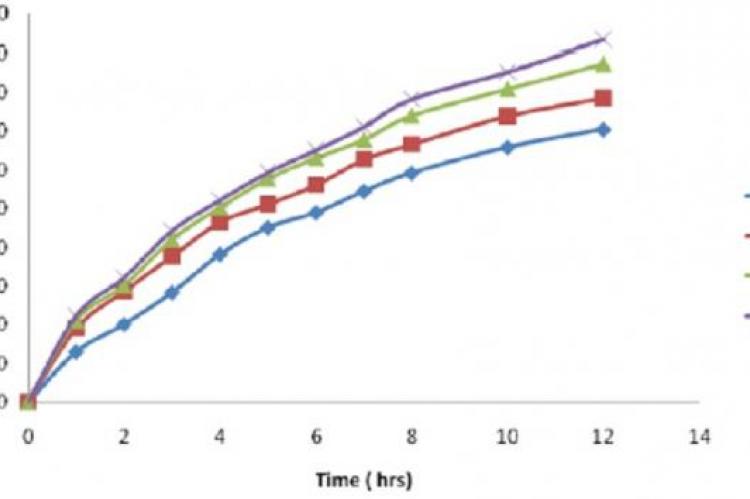The present study was undertaken to investigate the effect of channeling agents on the release profile of ambroxol hydrochloride from HPMC (Hydroxypropyl Methylcellulose) K4M based matrix systems. Matrix tablets of ambroxol hydrochloride using HPMC K4M were prepared by direct compression method. Microcrystalline cellulose (MCC) and Sodium chloride (Nacl) were used as channeling agents. Drug release study was evaluated for 12 hours using USP II paddle type dissolution rate test apparatus using pH 1.2 for first two hours and pH 7.4 phosphate buffer for remaining period as the dissolution medium. The obtained dissolution data was fitted into first order release kinetics, Higuchi, Peppas & Koresmeyer's equations. The release rate, extent and mechanisms were found to be governed by channeling agent type and content. Higher channeling agent content in the matrix increased the rate and extent of the drug release, at lower channeling agent level, the rate and extent of drug release was decreased and in absence of channeling agents these were least. Nacl ensures maximum release of drug from low viscosity grade HPMC K4M than MCC. It was found that type and amount of channeling agent significantly affect the time required for 50% of drug release (T50%), percentage drug release at 12 hours, release rate constant (K) and diffusion exponent (n). The release of ambroxol was found to be diffusion controlled and followed first order kinetics. The FT-IR studies were also indicating the absence of strong interactions between the components and suggesting drug-excipient compatibility in all the formulations examined.
View:
- PDF (803.41 KB)


